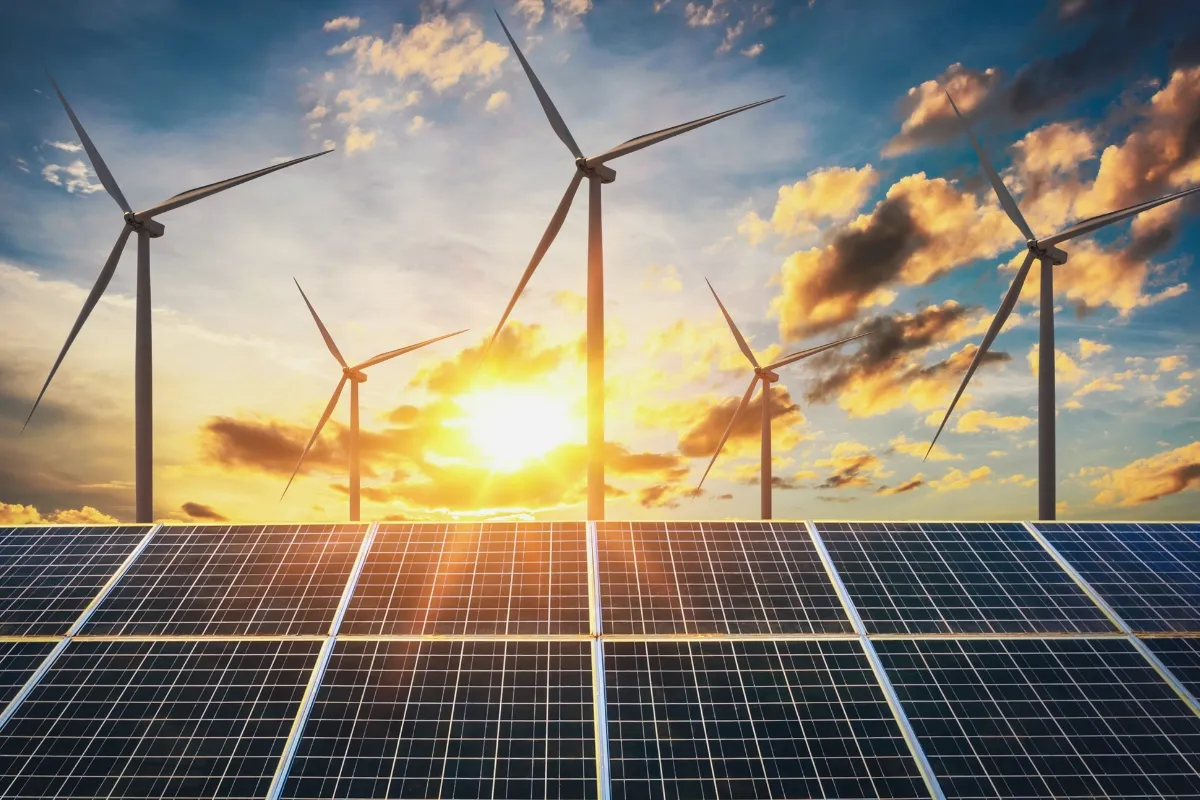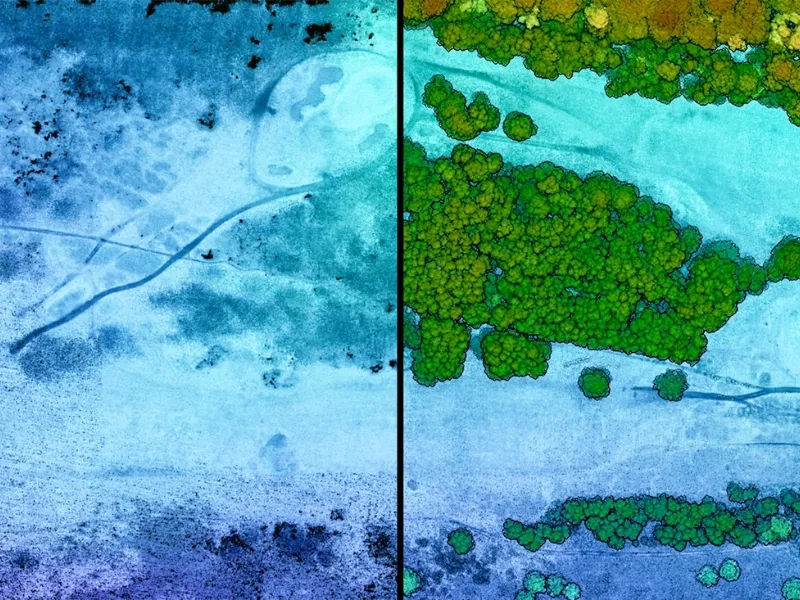
The renewable energy sector is rapidly adopting commercial drones to advance operational efficiency and asset management, with Vantage UAV leading the way with advanced drone technology. Our UAV solutions deliver enhanced safety, precision and monitoring capabilities through sustainable, low-impact operations that reduce carbon emissions compared to traditional inspection methods.
From routine inspections to comprehensive performance monitoring, drones provide precise data collection and real-time insights, redefining how renewable energy teams manage their assets.




Our drone technology provides safe and efficient inspection of wind turbine blades to detect damage, wear patterns and structural issues without requiring dangerous manual inspections. Equipped with state-of-the-art cameras and sensors, our drones capture incredible detail of blades and outer bearings condition, perfect for inspecting damage or malfunctions.
Thermal imaging inspections help detect unseen damage with early identification of problems such as blade delamination, erosion, electrical faults and mechanical issues. By providing an overview of the wind turbines heat signature, exterior and sub surface issues can be identified, such as overheating systems or connection failures, providing data to support targeted remedial action.

.webp)
We deploy heavy-duty drones capable of operating in challenging offshore conditions with higher wind speeds and salt spray environments. Our UAV systems conduct comprehensive turbine inspections directly from support vessels, eliminating the need for dangerous personnel transfers to elevated turbine platforms.
Targeted inspection data enables maintenance teams to identify specific repair requirements before accessing turbines, significantly reducing time spent at dangerous heights and minimising exposure to offshore hazards. This precision approach transforms maintenance operations from exploratory visits into focused repair missions.
Rapid drone deployments reduce asset downtime compared to traditional inspection methods, providing complete visual and thermal documentation of turbine conditions within days rather than weeks. Comprehensive inspection reports support maintenance planning and enable immediate assessment of critical components without costly mobilisation of specialist access equipment.
Implement systematic flight planning with identical flight paths and data collection points to generate consistent, repeatable datasets for performance analysis. Time-stamped comparative data enables identification of recurring maintenance patterns, supporting predictive maintenance strategies and proactive component replacement scheduling.
Terrain mapping and wind flow analysis data can be used to inform optimal turbine placement during site development, maximising energy capture potential across varying elevations and locations. Our LiDAR technology creates detailed topographical models that support foundation planning, access route design and environmental impact assessments.
Historical performance data analysis identifies operational trends and efficiency patterns, enabling strategic asset management decisions. Regular monitoring flights create valuable datasets for warranty claims, insurance assessments and long-term asset performance optimisation, supporting informed investment decisions for wind farm expansion and upgrade projects.




Our drone technology provides safe and efficient inspection of wind turbine blades to detect damage, wear patterns and structural issues without requiring dangerous manual inspections. Equipped with state-of-the-art cameras and sensors, our drones capture incredible detail of blades and outer bearings condition, perfect for inspecting damage or malfunctions.
Thermal imaging inspections help detect unseen damage with early identification of problems such as blade delamination, erosion, electrical faults and mechanical issues. By providing an overview of the wind turbines heat signature, exterior and sub surface issues can be identified, such as overheating systems or connection failures, providing data to support targeted remedial action.

We deploy heavy-duty drones capable of operating in challenging offshore conditions with higher wind speeds and salt spray environments. Our UAV systems conduct comprehensive turbine inspections directly from support vessels, eliminating the need for dangerous personnel transfers to elevated turbine platforms.
Targeted inspection data enables maintenance teams to identify specific repair requirements before accessing turbines, significantly reducing time spent at dangerous heights and minimising exposure to offshore hazards. This precision approach transforms maintenance operations from exploratory visits into focused repair missions.
Rapid drone deployments reduce asset downtime compared to traditional inspection methods, providing complete visual and thermal documentation of turbine conditions within days rather than weeks. Comprehensive inspection reports support maintenance planning and enable immediate assessment of critical components without costly mobilisation of specialist access equipment.
.webp)
Implement systematic flight planning with identical flight paths and data collection points to generate consistent, repeatable datasets for performance analysis. Time-stamped comparative data enables identification of recurring maintenance patterns, supporting predictive maintenance strategies and proactive component replacement scheduling.
Terrain mapping and wind flow analysis data can be used to inform optimal turbine placement during site development, maximising energy capture potential across varying elevations and locations. Our LiDAR technology creates detailed topographical models that support foundation planning, access route design and environmental impact assessments.
Historical performance data analysis identifies operational trends and efficiency patterns, enabling strategic asset management decisions. Regular monitoring flights create valuable datasets for warranty claims, insurance assessments and long-term asset performance optimisation, supporting informed investment decisions for wind farm expansion and upgrade projects.

Our drone technology provides safe and efficient inspection of wind turbine blades to detect damage, wear patterns and structural issues without requiring dangerous manual inspections. Equipped with state-of-the-art cameras and sensors, our drones capture incredible detail of blades and outer bearings condition, perfect for inspecting damage or malfunctions.
Thermal imaging inspections help detect unseen damage with early identification of problems such as blade delamination, erosion, electrical faults and mechanical issues. By providing an overview of the wind turbines heat signature, exterior and sub surface issues can be identified, such as overheating systems or connection failures, providing data to support targeted remedial action.




We're here to answer any questions you may have.